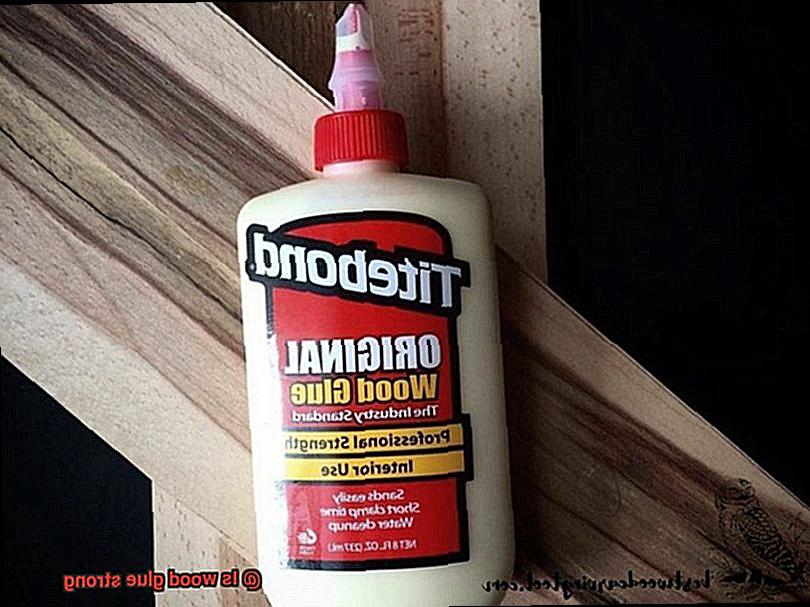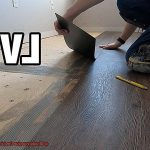As a DIY enthusiast or carpenter, you’ve probably wondered if wood glue is sturdy enough to hold your project together for years to come. The answer is a resounding yes, but it’s not that straightforward. Wood glue has been used for centuries to bond wood pieces, but with so many varieties available, choosing the right one can be challenging.
Wood glue is a versatile adhesive that can be utilized in everything from small crafts to large furniture. However, each type of wood glue has its unique properties. Some are ideal for indoor projects, while others are better suited for outdoor use. Some are water-resistant, waterproof, and some can endure extreme temperatures.
But beyond the different types of wood glue lies another crucial aspect- the quality of the wood glue you select. Not all glues are created equal, and some are stronger than others. High-quality wood glue creates a bond that surpasses the strength of the wood itself, making it an incredibly durable and long-lasting choice for woodworking projects.
In this article, we will delve into the various types of wood glue and explore what makes them robust. We’ll also compare their strength to other popular adhesives and offer tips on how to use them safely and effectively in your next woodworking project. So whether you’re a beginner or an expert in woodworking, keep reading to uncover the fascinating world of wood glue and how strong it truly is.
Types of Wood Glue and Their Properties
Contents
- 1 Types of Wood Glue and Their Properties
- 2 Factors that Affect the Strength of Wood Glue
- 3 How to Choose the Right Type of Wood Glue for Your Project
- 4 The Benefits of Using Wood Glue for Woodworking Projects
- 5 Proper Application Techniques for Maximum Strength and Durability
- 6 Limitations of Wood Glue
- 7 Advantages and Disadvantages of Using Wood Glue
- 8 Conclusion
If you’re a woodworker, you know that choosing the right type of wood glue is crucial to the success of your project. With so many options available, it can be overwhelming to choose the right one. Let’s take a deeper look at the different types of wood glue and their properties.
Polyvinyl acetate (PVA) glue is the most common type of wood glue. It’s water-soluble and dries clear, making it ideal for use on light-colored woods. PVA glue has a strong initial tack and sets quickly, making it perfect for projects that require fast assembly. However, it’s not suitable for use on outdoor projects as it’s not waterproof.
Epoxy glue is a two-part adhesive that consists of a resin and hardener. When mixed together, they create a strong and durable bond that is resistant to water, heat, and chemicals. Epoxy glue is ideal for use on outdoor projects or projects that require a long-lasting bond. It’s also great for bonding dissimilar materials.
Hide glue has been used by woodworkers for centuries. It’s made from animal collagen and is available in liquid form or as granules that must be mixed with hot water before use. Hide glue has a strong initial tack and sets quickly, making it ideal for use on delicate or intricate woodworking projects. It also has the benefit of being reversible, which means it can be easily removed with heat and water.
Cyanoacrylate glue, commonly known as superglue, is a fast-drying adhesive that creates an incredibly strong bond. It can be used on a variety of materials, including wood, metal, ceramic, and plastic. However, it’s not suitable for use on large woodworking projects as it sets too quickly.
Lastly, polyurethane glue is a waterproof adhesive that expands as it dries, filling any gaps between surfaces. It has excellent bonding strength and can be used on both porous and non-porous surfaces. However, it requires moisture to cure properly.
In conclusion, choosing the right type of wood glue depends on the specific requirements of your project. It’s important to consider the type of wood you’re working with, the desired strength and durability of the bond, and the conditions the project will be exposed to.
Factors that Affect the Strength of Wood Glue
As we all know, choosing the right wood glue is crucial to ensure a successful project. However, did you know that the strength of the bond depends on several factors? Let’s dive into the research and explore these factors in more detail.
Firstly, the type of wood glue you use can make a significant difference. There are various types of wood glue available in the market, such as PVA, epoxy, and hide glue. Each type has its unique bonding properties and strength. While PVA glue is known for its strong bonding properties, epoxy glue is considered to have the strongest bond.
Secondly, the application method plays a vital role in determining the strength of the bond. It would be best if you applied the glue evenly to ensure a robust bond. Applying too little or unevenly could result in a weak bond that will not hold up over time.
Thirdly, clamping pressure is essential to ensure a strong bond. The pressure applied during clamping forces the glue into the wood fibers, resulting in a stronger bond. Not applying enough pressure can result in a weak bond that won’t stand up to stress.

Fourthly, drying time is another critical factor to consider. You must allow sufficient drying time before removing clamps or applying any stress to the bonded area. Failing to give the glue enough time to dry can result in a weak bond that won’t hold up over time.
Lastly, the moisture content of the wood also affects the strength of the bond. If your wood is too dry or too wet, it can affect how well the adhesive penetrates into the wood fibers, resulting in an unreliable bond.
How to Choose the Right Type of Wood Glue for Your Project
Woodworking projects can be a fulfilling and rewarding experience, but choosing the right type of wood glue is essential to ensuring a strong and durable bond. Here are five factors to consider when selecting wood glue for your project:
Strength and Durability:
Consider the strength and durability of the glue you’re using. Polyurethane glue is known for its exceptional holding power and resistance to water and heat, making it ideal for outdoor projects or any project that requires a strong bond. Epoxy glue is often used for furniture or cabinetry projects because it creates an incredibly strong bond.
Type of Wood:
The type of wood you’re working with is also an important factor to consider. Harder woods like oak and maple require a stronger glue that can withstand the stress and strain of use. Softer woods like pine and cedar can be bonded with weaker glues.
Moisture Exposure:
If your project will be exposed to moisture, such as in outdoor furniture or kitchen counters, you will need a waterproof glue that can withstand water damage. Polyurethane glue is ideal for such projects.
Setting Time:
The setting time of the glue is another important factor to consider. Some glues dry quickly while others take longer to set. If you need to make adjustments or corrections during the assembly process, you will want a glue that has a longer setting time. Polyvinyl acetate (PVA) glue sets quickly while epoxy takes longer to cure.
Color:
Finally, consider the color of the glue. While most wood glues dry clear, some may have a slight yellow or brown tint that can affect the appearance of your project. If appearance is important, be sure to choose a glue that dries clear or matches the color of your wood.
The Benefits of Using Wood Glue for Woodworking Projects
Look no further than wood glue. For centuries, woodworkers have relied on wood glue to bond pieces of wood together, and its popularity has only increased with time due to the numerous benefits it provides.
One of the most significant benefits of using wood glue is the strength and durability it provides. Unlike other adhesives that may fail under pressure or tension, wood glue creates a chemical bond between the wood fibers, ensuring that the bond can withstand any force. This makes it a perfect choice for essential woodworking projects like furniture making or cabinetry.
But wood glue doesn’t just provide strength; it also fills gaps and pores in the wood, creating a seamless finish. This is particularly useful when working with rough or uneven pieces of wood that may have gaps or holes in them. The glue fills these gaps, creating a smooth surface that can be easily sanded and finished as desired.
And let’s not forget about how easy it is to use. Most types of wood glue come in a squeeze bottle or tube, making it simple to apply directly to the surface of the wood. Additionally, it has a relatively short drying time, which means that you can continue working on your project shortly after applying the glue.
In summary, using wood glue for woodworking projects provides many benefits, including strength, filling gaps and pores, and ease of use. But that’s not all. Here are some additional benefits:
- Wood glue is affordable and readily available at most hardware stores.
- It has a long shelf life if stored correctly, meaning you can use it for future projects.
- It dries clear, so you don’t have to worry about unsightly glue marks ruining your finished product.
Proper Application Techniques for Maximum Strength and Durability
A poorly bonded joint can result in a frustrating and disappointing outcome. But with the right techniques, you can achieve an unbreakable bond that can withstand even the toughest conditions.
First and foremost, the surfaces to be glued must be clean, dry, and free of debris. Any dirt or residue can interfere with the bonding process, resulting in a weak and unreliable joint. Take the time to clean your surfaces thoroughly before applying any glue.
When it comes to applying the glue, an even layer should be applied to both surfaces. Applying too much glue can lead to excess glue being squeezed out when the surfaces are pressed together, while too little glue can result in a weak bond that may fail over time. Applying the right amount of glue is crucial for achieving maximum strength and durability.
After applying the glue, it’s important to clamp the surfaces together firmly for the recommended amount of time. The length of time varies depending on the type of wood glue used and the conditions in which it is being applied. Refer to the manufacturer’s instructions for specific guidelines.
Temperature and humidity also play a significant role in the bonding process. Ideally, the temperature should be between 60-80 degrees Fahrenheit, and humidity should be between 35-50%. If the conditions are too cold or humid, it may take longer for the glue to dry and cure properly.
Choosing the right type of wood glue is equally crucial for maximum strength and durability. PVA (polyvinyl acetate), epoxy, and polyurethane are all types of wood glue available on the market, each with its own strengths and weaknesses. Consider which type of glue is best suited for your application before starting your project.
Limitations of Wood Glue
It’s important to understand that wood glue has its limitations. Let’s explore these limitations in more detail to ensure that your next woodworking project is successful.
One of the main limitations of wood glue is its inability to bond well with certain types of wood. For instance, oily or resinous woods such as teak or rosewood can interfere with the bonding process of the glue due to their natural oils or resins. In such cases, it’s best to use a different adhesive like epoxy or cyanoacrylate glue.
Another limitation of wood glue is its inability to fill gaps. Wood glue requires a tight fit between two pieces of wood to create a strong bond. If there are gaps between the two pieces, the glue will not be able to fill those gaps and create a strong bond. To overcome this limitation, use a filler or shim to close the gap before applying the wood glue.
Moreover, wood glue has limited strength when it comes to certain types of stress. It may not be able to withstand high levels of tension or shear stress. To tackle this issue, adding mechanical fasteners like screws or nails in addition to the wood glue can significantly increase the strength and durability of the bond.
It’s also essential to note that temperature and humidity changes can affect the performance of wood glue. Extreme temperature changes can cause the wood to expand and contract, which can weaken the bond created by the wood glue over time. Similarly, high levels of humidity can cause the glue to break down over time.
Advantages and Disadvantages of Using Wood Glue
This adhesive is a popular choice for DIYers and professionals alike, thanks to its strong bonding ability and ease of use. Let’s dive deeper into what makes wood glue such a great option, as well as some limitations to keep in mind.
Advantages:
- Strong bond: Wood glue creates a robust bond between two pieces of wood, making it ideal for long-lasting and durable woodworking projects.
- Easy to use: Wood glue is easy to apply, making it a popular choice for DIY enthusiasts. Plus, it dries relatively quickly, allowing for timely project completion.
- Affordable: Wood glue is widely available and generally inexpensive, making it an accessible option.
- Versatile: Wood glue works on different types of wood and can be used in combination with other materials like metal or plastic.
Disadvantages:
- Not waterproof: The majority of wood glues aren’t waterproof, which limits their effectiveness in moisture-exposed woodworking projects.
- Long drying time: While wood glue dries relatively quickly, it can take several hours or even overnight to fully cure. So, you’ll need to give your project ample time to dry before handling it.
- Limited shelf life: Once opened, wood glue has a limited shelf life and may become less effective over time.
- Can be messy: Applying wood glue can be messy if not done carefully, requiring extra cleanup.
f90QoWOs9TE” >
Conclusion
In summary, wood glue is a dependable and robust adhesive that has stood the test of time in woodworking projects. However, it’s crucial to select the appropriate type of wood glue for maximum strength and durability. Polyvinyl acetate (PVA) glue is the most commonly used wood glue due to its strong initial tack, while epoxy glue offers the strongest bond and is perfect for outdoor projects. Hide glue provides a strong initial tack and is reversible, making it an excellent choice for delicate or intricate woodworking projects.
Several factors influence the strength of wood glue, including the type of wood glue used, application method, clamping pressure, drying time, and moisture content of the wood. To ensure optimal results, it’s essential to consider these factors when selecting wood glue for your project.
Wood glue offers numerous benefits such as strength, gap filling capabilities, ease of use, affordability, and versatility. However, it also has some limitations like its inability to bond well with specific types of wood or fill gaps effectively.
Ultimately, using wood glue in woodworking projects can be incredibly fulfilling when done correctly.






